Body Lift in Morocco
Search and Compare the Best Clinics and Doctors at the Lowest Prices for Body Lift in Morocco

Find the best clinics for Body Lift in Morocco
With Medijump you can browse 3 facilities offering Body Lift procedures in Morocco. The cheapest price available is $2,537 in Casablanca. And for the cheapest price globally, prices start from $216 in Philippines.
Body Lift in Casablanca
Price: $ 2,537
Philippines offers the best prices Worldwide
Price: $ 216
From 14 verified reviews
Osp Global, 03 December 2019
Excellent service with professionalism .Dr HASSAN EL GBOURI he did for me PRP and hair transplant it’s fantastic thank you Ms said I respect your work
From 13 verified reviews
Montse Alconchel Ruiz, 25 March 2020
I need you to send me your email, I was in the hospital last Saturday March 7 doing some tests and I have lost the medical report they gave me, I have tried to call them by phone several times but there is no way. my email [email protected] my name Montserrat AlconchelAdmission number 200308164407WK-001
From 23 verified reviews
Zineb Solaihi, 22 November 2019
Clean clinic very lovely staff
- Home
- Morocco
Compare Before & After Photos of _procedure_photos.phpBody Lift

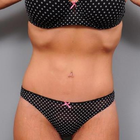
Front view

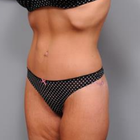
Half-side view
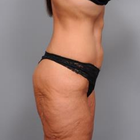
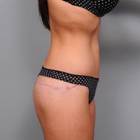
Full-side view
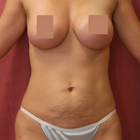

Front view
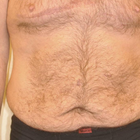
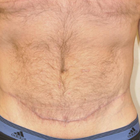
Front view
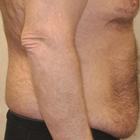
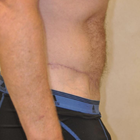
Half-side view


Front view
WHY US?
At Medijump, we're making medical easy. You can search, compare, discuss, and book your medical all in one place. We open the door to the best medical providers worldwide, saving you time and energy along the way, and it's all for FREE, no hidden fees, and no price markups guaranteed. So what are you waiting for?

Free

Best Price

Widest Selection

Risk-Free
What you need to know about Body Lift in Morocco

If you're considering a Body Lift procedure, you can trust the skilled surgeons in Morocco to refine your body contours. This operation primarily aims at removing excess sagging skin and fat, commonly post significant weight loss. The entire process can take anywhere between 3-7 hours.
Having a detailed discussion with the surgeon before the procedure ensures that the patient is fully aware of what the procedure entails, risks involved, post-surgery care, and changes to anticipate.
What is the cost of Body Lift in Morocco?
The cost for Body Lift surgery varies widely in Morocco, typically ranging around $15,000 to $30,000. These costs include a myriad of factors such as the surgeon’s charges, anesthesiology, operating room costs, and any other additional expenses required like specialised equipment or scar reduction creams.
However, it’s crucial to prioritise quality and safety over cost when deciding to go ahead with the procedure. After all, your physical well-being and self-confidence are invaluable.
What does a Body Lift Procedure Involve?
A Body Lift procedure is conducted under general anaesthesia wherein the surgeon makes specific incisions around the lower waist and upper thigh region to remove excess skin. Often, other procedures like liposuction can be undertaken to eliminate persistent fat deposits. Moreover, supplementary procedures such as liposuction can also be employed to get rid of persistent fat deposits, thus achieving a more defined body silhouette. After achieving the desired results, the incisions are meticulously sealed off using sutures, skin adhesives, or surgical tapes.
Bear in mind, while we have tried to explain the process, every Body Lift procedure is unique to the individual being treated. Therefore, the procedure's length and exact practices may vary depending on the patient's health status and the extent of sculpting required. It is this personalized approach that ensures the optimal outcome and patient satisfaction. Therefore, an in-depth consultation with your surgeon is necessary to fully understand the procedure's depth and commitment required.
How Long Should I Stay in Morocco for a Body Lift Procedure?
The timeline of your stay in Thailand for a Body Lift operation largely hinges on numerous factors. These can include preparation leading up to the surgery, your rate of healing, and the requirement for supplementary treatments. As a general rule, a Body Lift surgery is executed within a single day. Depending on how swiftly you recover and your overall well-being, you might be discharged on the same day or necessitate an overnight stay for observation.
Further, it's typically advantageous to continue your stay in Thailand for a period following the procedure. During this time, any follow-up appointments can be attended, and sutures, if used, may be safely removed. This post-surgery process can last for about a week or two, but a precise time frame can be given only after discussions with your treating physician. Prioritising a thorough recovery process is central to obtaining the best surgical results and minimising the possibility of complications.
What's the Recovery Time for Body Lift Procedures in Morocco?
Getting through a Body Lift Procedure in Morocco is only the beginning. The following weeks will be all about healing and recovery. Much like with every major surgery, the healing period varies with each person—it's comprehensively individual. But if we're to talk numbers and averages, the initial recovery phase usually lasts between about two weeks to a month. During these weeks, it's completely normal to experience some puffiness, bruising, and even some discomfort.
However, while the initial healing phase could be measured in weeks, complete healing can be slightly more extended—extending up to six months. The journey can be long, indeed. But remember, patience and discipline are what will get you through. You should take it easy and avoid heavy physical activities; instead, focus on eating right and sleeping well as this aids the speedy recovery. Of course, your doctor will be there to guide you, providing all the necessary instructions and advice relating to medications, wound care, and what to look out for. And they'll tell you this too sticking to these instructions is absolutely essential for a successful recovery.
What's the Success Rate of Body Lift Procedures in Morocco?
Body Lift surgeries conducted in Morocco have consistently demonstrated an outstanding degree of success, largely creditable to the skill set of seasoned surgeons located in the region. Here, the word 'success' extends beyond the visible physical improvements observed post-surgery. It further includes the intangible yet significant gains such as a surge in self-esteem and overall enhancement in the way of life that patients commonly report following the procedure.
However, it's vital to take note that the results of this procedure are not exclusively in the hands of our accomplished healthcare professionals. Patient participation is a key factor in ensuring a good outcome. Adherence to the advice given by the physician before and after the surgery, commitment to a healthful lifestyle, and holding realistic goals regarding the outcome of the surgery are critical aspects in the pursuit of a satisfactory and enduring outcome. In essence, the surgical outcome relies on a two-way relationship – the medical proficiency of the surgeon coupled with the patient's dedication towards their health and welfare.
Are there Alternatives to Body Lift Procedures in Morocco?
Though body lift surgeries are widely recognized for their effectiveness in enhancing body contours, they don't stand alone as the sole solution. In Morocco, you'll discover a variety of non-surgical and less invasive treatments for both skin tightening and body reshaping. These include:
- Laser therapies: This approach doesn't require any operation or invasive method. It uses a specific kind of light source (an infrared laser) to heat the collagen, a protein situated under your skin. This heating effect causes the skin to contract, leading to a tightened feel and look.
- Radiofrequency therapies: This harmless procedure triggers collagen production and the contraction of tissues through radio waves. As a result, your skin becomes firmer and gets a rejuvenated glow. It also helps reduce wrinkles and sagging.
- Cryolipolysis (CoolSculpting): This treatment cools down fat cells to a temperature that alters their structure until your body naturally gets rid of them.
- Liposonix: This method engages a non-invasive, high-intensity ultrasound technology to eliminate specific sections of fat beneath your skin, delivering consistent and expected results.
It's important to remember that while these treatments can provide significant benefits, they may not achieve the same long-lasting and striking results as a Body Lift procedure. Therefore, it is always best to consult with an experienced surgeon or healthcare professional in Morocco to get advice tailored to your specific needs and circumstances.
What sort of Aftercare is Required for Body Lift Procedures in Morocco?
Successful recovery from a body lift procedure in Morocco requires diligent aftercare. Post-procedure recommendations often include:
- Wound Care: Regularly cleaning and dressing the surgical wounds as advised by the healthcare provider.
- Medications: Taking prescribed medications timely to manage pain and prevent infections.
- Restrictions on Activities: Refraining from vigorous physical activities for at least a few weeks after surgery to allow the body time to heal.
- Hydration and Nutrition: Maintaining a well-balanced diet high in proteins and staying hydrated to facilitate healing.
- Follow-Up Consultations: Attending regular follow-up appointments with your healthcare provider to monitor the healing progress and address any complications at their earliest.
Remember, every individual has different healing rates, and commitment to the aftercare guidelines will ensure faster recovery and better results.
Can Body Lift Procedure Improve the Overall Health?
Beyond enhancing one's figure, a Body Lift Procedure positively impacts overall health and mobility. It helps combat skin problems like rashes and infections and improves body mobility by eliminating excess skin.
And let's not forget the mental well-being link here. This surgery can give self-confidence a giant boost and can have you feeling better about how you look, contributing to your mental health in a big way.
However, this procedure is not a shortcut to weight loss—it should ideally be performed once significant weight loss has already taken place. As with all surgical procedures, the decision should be made under the guidance of healthcare professionals, weighing the benefits against the risks.
Can Body Lift be Combined with Other Procedures?
Combining a Body Lift with other surgeries like breast enhancement or facial beautification is common practice in the field of cosmetic surgery. This technique yields a significant advantage of a single recovery process and reduced overall costs.
However, this decision rests on the patient's overall health condition and the complexity of the involved procedures. Therefore, we recommend having an in-depth discussion with your chosen surgeon to weigh your options.
What's the Impact of Weight Fluctuation After a Body Lift?
Significant weight changes after a Body Lift procedure can profoundly impact the aesthetic results and possibly present health risks. The effects of such weight changes typically include:
- Weight Gain: Substantial weight gain post-surgery can cause the skin and tissues to stretch again, negatively affecting the improved body contour achieved from the procedure.
- Weight Loss: On the flip side, extreme weight loss can lead to additional sagging and loose skin, diminishing the aesthetic improvements from the body lift.
Maintaining a stable and healthy weight is key to preserving the benefits of this procedure. Achieving this entails:
- Balanced Diet: Consistently adhering to a nutritionally balanced, portion-controlled diet.
- Regular Exercise: Engaging in regular, moderate physical activities to aid in maintaining your weight.
A body lift procedure, however, is not a replacement for a healthy lifestyle or a weight-loss solution. It should ideally be performed post-significant weight loss to help reshape and redefine the body contours. As with any surgical procedure, it's essential to have the guidance and approval of your healthcare provider to ensure optimum results and uphold your safety.
Is the Body Lift Procedure Safe for Older Adults?
Age isn't necessarily a determinant for whether someone can undergo a Body Lift operation; it's all down to their overall health and fitness. Even though healing might be slower in the elderly, and they may have a higher risk of surgical complications, they are not necessarily exempt from considering this procedure.
Therefore, it's crucial to have a comprehensive medical evaluation and a thorough discussion with the healthcare provider about the expected results versus the potential risks involved.
Whilst the information presented here has been accurately sourced and verified by a medical professional for its accuracy, it is still advised to consult with your doctor before pursuing a medical treatment at one of the listed medical providers
No Time?
Tell us what you're looking for and we'll reachout to the top clinics all at once
Enquire Now

Popular Procedures in Morocco
Prices Start From $113

Prices Start From $208

Prices Start From $600

Prices Start From $70

Prices Start From $111

Prices Start From $28

Prices Start From $120

Prices Start From $931

Prices Start From $275

Prices Start From $76

Prices Start From $236

Recommended Medical Centers in Morocco for Body Lift

- Interpreter services
- Translation service
- Religious facilities
- Medical records transfer
- Medical travel insurance
- Health insurance coordination
- TV in the room
- Safe in the room
- Phone in the room
- Private rooms for patients available

- Interpreter services
- Translation service
- Religious facilities
- Medical records transfer
- Medical travel insurance
- Health insurance coordination
- TV in the room
- Safe in the room
- Phone in the room
- Private rooms for patients available

- Interpreter services
- Translation service
- Religious facilities
- Medical records transfer
- Medical travel insurance
- Health insurance coordination
- TV in the room
- Safe in the room
- Phone in the room
- Private rooms for patients available

- Interpreter services
- Translation service
- Religious facilities
- Medical records transfer
- Medical travel insurance
- Health insurance coordination
- TV in the room
- Safe in the room
- Phone in the room
- Private rooms for patients available

- Interpreter services
- Translation service
- Religious facilities
- Medical records transfer
- Medical travel insurance
- Health insurance coordination
- TV in the room
- Safe in the room
- Phone in the room
- Private rooms for patients available
Body Lift in and around Morocco
About Morocco
Morocco is a popular destination, attracting culture lovers, backpackers, adventure travelers, couples, families, foodies, and more to its four imperial cities: Marrakesh, Fes, Meknes, and Rabat. Rabat is the current capital city. Although a modern city at first glance, it has several interesting historical attractions, such as the Kasbah of the Oudaias, the old medina, and the Hassan Tower. The gleaming Royal Mausoleum is also well worth a visit. Known as the Red City, Marrakesh is famous for its old medina, numerous souks, ancient palaces like Badi Palace and Bahia Palace, the striking Koutoubia Mosque, the energetic Djemaa el-Fna, and the Saadian Tombs. The former capital of Fes boasts plenty of stunning architecture, though it is perhaps most known for its large tanneries and for being home to one of the oldest universities in the world. Meknes has one of the most impressive monumental gates in all of Morocco, Bab el-Mansour. Horse-drawn carriages are a great way to explore the charming and relaxed imperial city. Morocco has beaches along both the Mediterranean Sea and the Atlantic Ocean. Popular holiday spots with foreign visitors include Tangier and Agadir, while Asilah attracts mainly locals and Spanish visitors. The vast Sahara Desert is the world’s largest hot desert. There are several places in Morocco from where you can begin expeditions into the desert, and there are plenty of experienced operators offering trips to remember.
The country welcomes an ever-increasing number of medical tourists each year, many of which travel for Body Lift procedures. Medical Tourists travel from all across the globe, particularly from neighboring African countries with an inferior healthcare system. Casablanca and Marrakesh are the popular cities and they mostly cater to dentistry and plastic surgery requirements
Popular Parts of Morocco
Morocco, with a population of over 35 million people, is known to be magical and chaotic. The country is very diverse, from Saharan Dunes, High Atlas, ancient medinas, friendly locals to traditional life; Morocco has everything for every tourist.
- Marrakesh is also known as the red city because of its famous red walls, plazas, and alleys. It has a beautiful medina (old town) where tourists can wander around, be amazed by the historical city, and explore and shop in the souks. Visit Djamaa el-Fina and find street performers, musicians, and tattoo artists.
- Fez is considered as Morocco’s cultural and spiritual center. The city is filled with museums, mosques, palaces, and fountains. The most popular attraction is the medina, tourists can explore the tiny streets and find an array of street vendors. Remember to try the amazing local cuisine and stay away from wandering down empty streets.
- Tangier is located in northwestern Morocco on the Maghreb coast. It offers a breathtaking waterfront where you can see the Mediterranean Sea meets the Atlantic Ocean. The city is known to be Europe’s gateway to Africa. It has a fascinating cultural landscape as well as an inviting literary and artistic past.
- Casablanca is the biggest city and the least popular tourist’ destination in Morocco. But the city is actually full of hidden gems. From Art Deco architecture, beaches, markets, to history and culture, tourists will find many amazing things to see here.
- Rabat is often overlooked by tourists. It is the political and administrative capital of Morocco that offers plenty of charm. Tourists are free to roam around the Tower of Hassan, enjoy a day at the calm beach, or admire the big medina.
Weather and Climate in Morocco
Morocco’s climate is generally moderate and subtropical with cool breezes from the Atlantic and the Mediterranean Sea. Temperature varies greatly depending on region and altitude. Summer lasts from June to August and is often really hot. Winter comes in November and ends in January. It is the wettest and coldest season in the country. The best time to visit is in Spring and Autumn where the weather is warm and pleasant.
The coastal regions have nice weather throughout the year, the Winter has mild temperature and although the temperature will rise in the Summer, it’s not too hot. The High Atlas Mountains can be visited all year round but the winter can get really cold. There will be snow on the peaks during Winter. The summer can be a little too hot for any long-distance hike.
Getting Around in Morocco
Morocco’s main gateway is Casablanca's Mohammed V International Airport. The airport is located in Nouaceur Province and is the busiest airport in the country. It is the hub for Air Arabia Maroc, Royal Air Maroc. It serves domestic and international flights to and from many cities in the Middle East, Europe, and America. Major and budget airlines operate flights from this airport. Other important airports include Menara airport in Marrakesh, Fes–Saïss in Fez, Ibn Batouta International in Tangier.
There are several options for tourists to travel to downtown Casablanca. Buses are affordable, a single ticket costs 20.00 MAD. It will take around 45 minutes to get to the city center. There’s also a bus line that will take tourists to Rabat.
Casablanca Airport has an underground train station that connects to Mers Sultan, Casa Port, Casa-Voyageurs or L’Oasis. The total trip time to downtown Casablanca is 45 minutes. The trains operate from 06.00 am to 10.00 pm.
Taxis are the most convenient mean of transportation, but they’re also more expensive than trains and buses. The base fare is around 250.00 MAD to 300.00 MAD (25 to 30 USD). Always avoid non-authorized taxis because they are known to overcharge. Refuse to board a taxi with broken or turned off meters. Remember that Casablanca official taxis are painted in white.
The most efficient and affordable way to get around Morocco is by the intercity buses. The most popular operators are Supratours, CTM, SATAS, and Ghazala. A ride from Marrakesh to Casablanca is around 4 hours and should cost 90 MAD (9 USD).
Morocco’s national rail network is operated by ONCF and connects major cities like Marrakesh, Casablanca, Fez, and Rabat. The trains are usually on-time and comfortable. First-class tickets cost about 45 MAD (5 USD) per hour and the second class tickets cost around 30 MAD (3 USD).
Tourist Visas in Morocco
Citizens of Australia, New Zealand, Canada, the United States, the European Union, Britain, Japan, and South Africa do not need a visa to enter the country. Citizens of 66 countries can enter and stay in Morocco for up to 90 days. Citizens of the Republic of the Congo, Guinea, and Mali do not require a visa but must obtain an Electronic Travel Authorization in advance.
It is recommended to check the current regulations with the Moroccan Embassy or Consulate in your country. All visitors must hold a passport valid for over 6 months at the entry date.
Additional Information
- Local Currency: The official currency if Moroccan Dirham (MAD). The exchange rate from 1 USD is 9.70 MAD.
- Money & Payments: Tourists can find many ATMs spread around the country and they are the easiest way to access money. Credit cards are accepted in top-end hotels and restaurants. Always carry some cash with you. Many Moroccan riads will accept euros. Tipping can sometimes be mandatory. It is not necessary to tip taxi drivers, but it is polite to do so.
- Local Language: There are two official languages in Morocco; Modern Standard Arabic and Amazigh (Berber). French is widely understood and spoken in the country. Many people in the northern and southern parts of the country can speak Spanish. English is not widely spoken but some people in tourist and urban areas can speak English. Most street signs are written in Arabic and French.
- Local Culture and Religion: The majority of Morocco’s population follows Islam. Christianity, Judaism, and Baha’i Faith are freely practiced. The country has a conservative dress code. Avoid wearing revealing clothes regardless of the season.
- Public Holidays: Islam religious holidays are celebrated in Morocco. The country hosts several annual festivals such as Marathon des Sables, Kelaa-des-Mgouna Rose Festival, and Marrakesh Popular Arts Festival.
Popular Searches
- Plastic Surgery in Thailand
- Dental Implants in Thailand
- Hair Transplant in Thailand
- Breast Augmentation Thailand
- Gastric Sleeve in Thailand
- Gender Reassignment Surgery in Thailand
- Laser Hair Removal in Bangkok
- Botox in Bangkok
- Dermatology in Bangkok
- Breast Augmentation in Bangkok
- Coolsculpting in Bangkok
- Veneers in Turkey
- Hair Transplant in Turkey
- Rhinoplasty in Turkey
- Stem Cell Therapy in Mexico
- Rhinoplasty in Mexico
- Liposuction in Mexico
- Coolsculpting in Tijuana
- Rhinoplasty in Korea
- Scar Removal in Korea
- Gastric Sleeve in Turkey
- Bone Marrow Transplant in India
- Invisalign in Malaysia
- Plastic Surgery in the Dominican Republic
- Tummy Tuck in the Dominican Republic
- Plastic and Cosmetic Surgery in Poland
- Rhinoplasty in Poland
- Hair Implant in Poland
- Dental Implants in Poland
- IVF in Turkey


